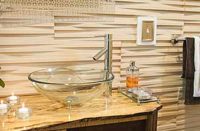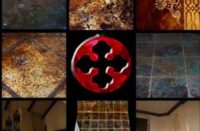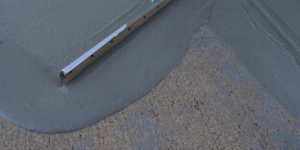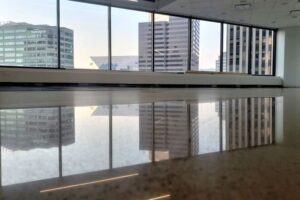Self-leveling products vary widely in their makeup, so which one you choose may largely depend on what you plan to do with it.
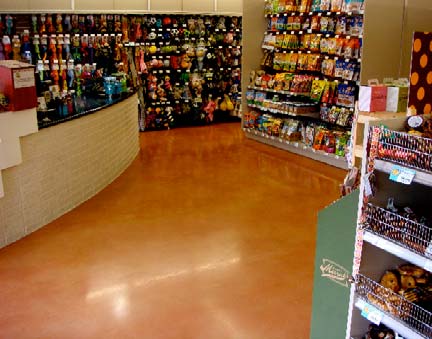
Polish it
Take Matt Johnson, principal of Green Earth Floors in Tuckahoe, N.Y., for instance. The contractor, who stains and polishes a lot of floors in the New York City and the Tri-State Region, swears by CTS Cement Manufacturing’s Rapid Set TRU, a hydraulic cement-based self-leveling concrete product that can be used indoors and outdoors as a topping, a floor resurfacer or an underlayment.
“TRU is a great product and very versatile,” he says. “It produces the prettiest and richest-looking (surface) of all the resurfacing flooring solutions out there. I like it because I get very consistent results, which is important not only to my end result but to architects and designers when specing a floor. I’ve tried many others and they just won’t take the weight and friction of the heavy grinders needed for polishing.”
“Our TRU has very little polymer in it,” explains CTS concrete sales representative Joe Zingale. “When you’re polishing it, it’s like polishing real concrete. That’s where our product shines over the competition.”
Johnson says the product, which lays down like water, levels out quickly and remains workable for about a half hour. Crews can walk on it in three hours, coat it in 12 and grind it in 24. And if a pour hasn’t gone well, imperfections can be ground out.
“No one gives us the floor for very long, yet New Yorkers won’t tolerate imperfections,” Johnson says. “They expect results like they do with carpeting – instantaneous.”
Johnson notes TRU also achieves strength early, hitting 5,000 psi in 24 hours. In 28 days, that number climbs to 6,500 psi.
The Green Earth Floor principal adds that he favors smooth monolithic floors, using stencils and different colors of stains to create patterns. He prefers not to use saw cuts as decorative elements, because they have the potential to hold dirt and grime, create trip hazards and are prone to failure.
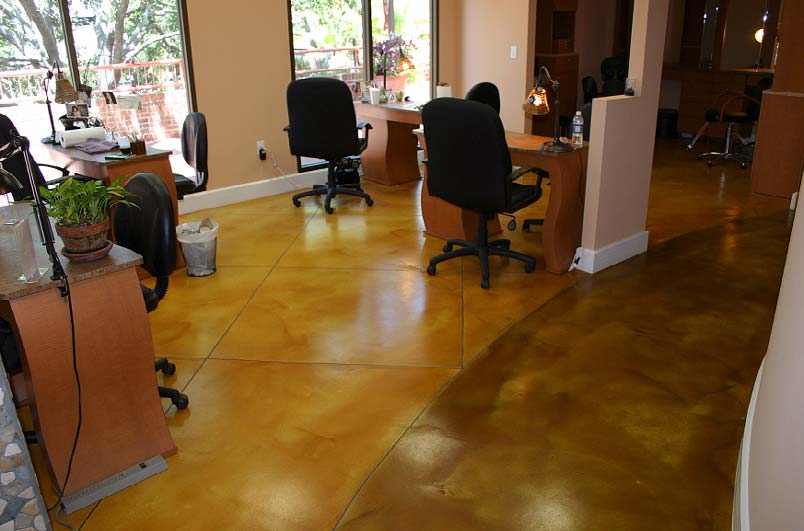
Making the mark
Down in Tampa, Brian Elsinger, owner of Unique Concrete of Florida, has stuck with the Increte self-leveling floor resurfacer for his jobs. “Once you learn to play the game, you don’t want to switch teams,” he says. “I stick with what I know and I can make it work every time.”
Elsinger typically colors his floors with acid stains or water-based dyes and cuts patterns with a high-speed rotary tool or a track saw. “The product is put down so thin you have to use a special saw to try to keep the grout line color-consistent,” he says. “If you cut too deep, you’ll hit the concrete below the topping.” If that happens, he says, they come back and use tile grout.
Even though the product levels on its own, Elsinger moves it around with a gauge rake to apply the product to the floor at the desired thickness, generally 3/16 inches. To get rid of the rake lines, he uses a Magic Trowel, a soft-rubber 18-inch trowel on a handle. “If it’s done properly, you won’t see the trowel lines,” Elsinger says. “You’ll see – but not feel – a pattern of swirls and bends. That’s how I put life into a floor.”
The Florida contractor says staining the self-leveling product can be tricky. He usually has two or three guys pumping a color of stain onto the floor at the same time, diluting different batches at various percentages – say 50 percent, 10 percent and 100 percent – to create a mottled look. “It’s all just a guessing game, and you don’t really know what it’s going to look like until you put the sealer on,” he muses.
When he first started using the Increte resurfacer, Elsinger recalls, he encountered a couple of problems. At first, he kept getting bubbles and trowel lines wouldn’t disappear. But he discovered both problems went away when he applied the bonding agent a bit differently. “I don’t know if it’s true for every self-leveler, but if I wait for the first coat to dry and then roll out a second coat and let it set overnight, it seals the concrete and doesn’t let it breathe. Proper preparation is key to a good-looking job.”
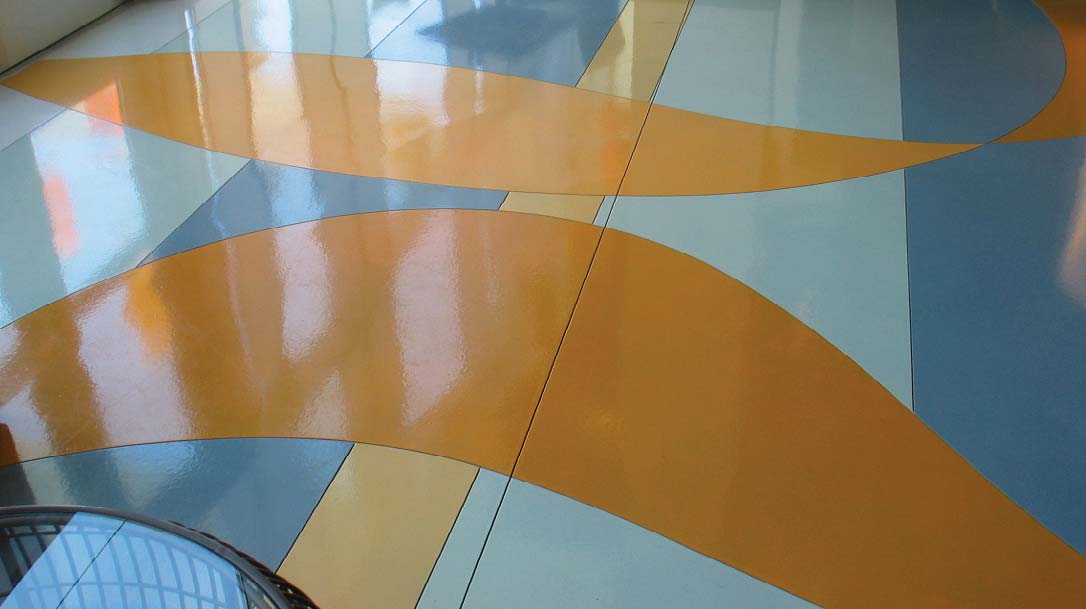
Covering wood
Todd Seaboch, owner of Concrete Craftsmen in Santee, Calif., reports good results with TC-25 Self-Leveling Cement from Westcoat Specialty Coating Systems on wood as well as concrete substrates.
“I’ve done several jobs over a (properly framed) wood substrate, but I prepped the floor with HardieBacker cement board and Westcoat WP 90 and fiber lath, or with the Westcoat ALX system (that is reinforced with metal lath),” Seaboch says. “It’s important when going over wood that you don’t have any voids where the self-leveling material can seep through.”
He says the Westcoat topping maintains its fluidity a little longer than some of the other products he’s used. “I find this product a little friendlier to use than others I’ve tried. You’ve got a good 10 minutes to work it,” Seaboch says. “You can go back in a short amount of time and move it around a little bit and add more to areas that are sinking in. You can fix a little bubble area but you have to be pretty quick. Others, you can’t do anything to it once you’ve raked it.”
Seaboch says he prefers to use water-based stains and typically uses two or three colors at the same time. He has yet to try integral colors. “I like a white base to start with,” he says, “just like a new canvas.”
www.greenearthfloors.com
www.uniqueconcreteinc.com
www.concretecraftsmen.com
